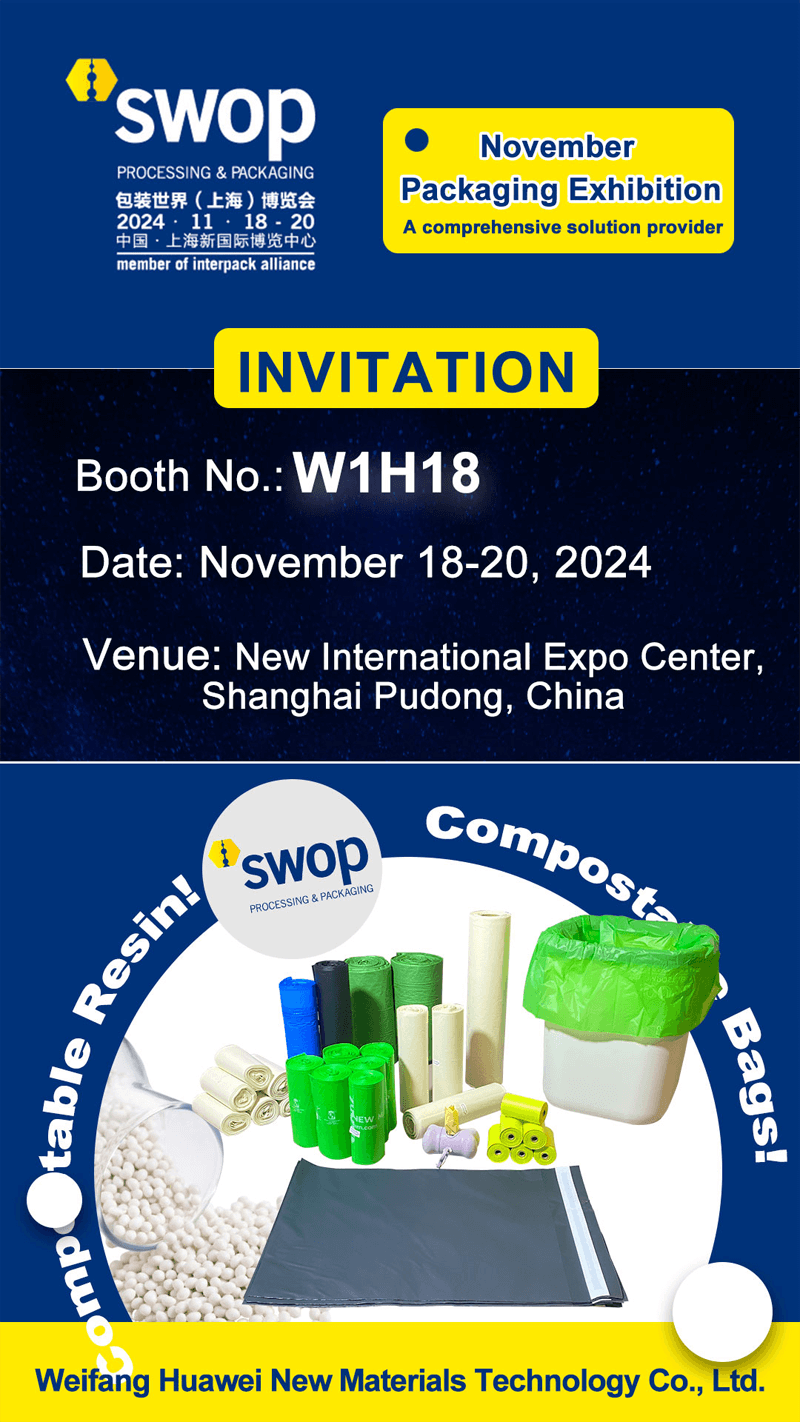Jan. 06, 2024
Plastic degradation refers to the end of the life cycle of high polymer materials, with a decrease in molecular weight, manifested as plastic brittleness, cracking, softening, hardening, and loss of mechanical strength. The degradation of ordinary plastic bags takes decades or even hundreds of years, and nondegradable plastic bags can pollute the environment when buried or incinerated. In order to protect the environment, the invention of degradable plastic bags has emerged.

Degradable plastic bags refer to plastic bags that are easily degraded in the natural environment by adding a certain amount of additives (such as starch, modified starch or other cellulose, photosensitizers, biodegradable agents, etc.) during the production process, which reduces their stability.
Biodegradable plastic bags can be completely decomposed into low molecular weight compounds under the action of microorganisms. Its characteristics are convenient storage and transportation, as long as it is kept dry, there is no need to avoid light, and its application range is wide. It can not only be used for agricultural films and packaging bags, but also widely used in the pharmaceutical field. With the development of modern biotechnology, biodegradable plastics are receiving increasing attention and have become a new generation of research and development hotspots.
A biodegradable bag refers to a type of plastic bag that can degrade under specific conditions, usually made of biodegradable materials such as Starch based resin materials, CaCo3 Based resin materials, polylactic acid (PLA), polyester (PBAT) etc.
The degradation process is carried out through microbial action, hydrolysis, oxidation, and other methods, breaking down polymer molecules into small molecular substances, ultimately forming natural substances such as carbon dioxide, water, and organic matter, which will not cause pollution to the environment.
Compared with ordinary plastic bags, biodegradable bags have the advantages of environmental protection and sustainability. Specifically, the degradation of biodegradable bags needs to meet the following conditions:
1. Temperature: Biodegradable bags have a relatively fast degradation rate in soil or seawater above 20 ℃. If the temperature is too low, the degradation rate may slow down.
2. Humidity: It needs to be carried out under certain humidity conditions, usually with the best degradation effect at 60-80% humidity.
3. Microorganisms: A certain amount of microbial involvement is required, usually by placing bags in organic waste compost for degradation.

It should be noted that the degradation time and effectiveness of biodegradable bags depend on specific material types, environmental conditions, and other factors. Some manufacturers may require more special environmental conditions to achieve the "degradation in a few days" advertised by them. In addition, if biodegradable bags are mixed with other plastic bags, it is difficult to achieve effective degradation, so the correct recycling method is also very important.
Related Products
Latest News
The “Degradable Plastic Bags” You Throw Away Are Secretly Polluting Our Homes
Degradable Bags Become Organic Fertilizer After Use Safety and Environmental Protection
The Situation Of Plastic Waste In 2025
The total consumption and per capita consumption of plastic
Celebrating the Chinese New Year-Rejecting Excessive Packaging And Plastic Waste
What Is The Difference Between Biodegradable Bags And Fully Biodegradable Plastic Bags?
The origin of plastic can be traced back to the mid-19th century.
How Biodegradable Plastic Bags Decompose Without Releasing Toxins
How Bio Plastic Bags Support Sustainable Product Manufacturing
Do Bio Plastic Bags Release Harmful Substances During Decomposition?
Does Biodegradable Plastic Bags Have an Impact on Environmental Protection
The Difference Between Fully Degradable Plastic Bags And Pseudo Degradable Plastic bags
The Difference Between Fully Degradable Plastic Bags And Pseudo Degradable Plastic bags
The Difference Between Biodegradable Mailer Bags And Traditional Mailer Bags
How Long Does It Take For Wet Garbage And Different Plastic Bags To Degrade?
Degradable Plastic Bags - What Is The Difference Between Degradable, Biodegradable And Compostable?
Current Status and Future Development Trends of Biodegradable Plastic Bag Market in 2024
Traditional Plastic Bags Have Gradually Been Replaced By Biodegradable Plastic Bags
In 2024, Protect Our Planet And Make The New Year More Meaningful
How to Create the Perfect Packaging Field?
From November 22 to November 24, 2023, we participated in Shanghai World Of Packing.
